The Role of Mortgage Insurance
Mortgage insurance plays a significant role in the home-buying process, particularly for borrowers who cannot afford a substantial down payment. It serves as a financial safeguard for lenders, protecting them against potential losses if the borrower defaults on the loan. While it adds to the overall cost of homeownership, mortgage insurance enables many buyers to access financing and achieve their dream of owning a home. This article explores the types of mortgage insurance, how it works, and its impact on loans and borrowers.
What is Mortgage Insurance?
Mortgage insurance is a policy designed to protect lenders against the risk of borrower default. It is typically required when a borrower makes a down payment of less than 20% of the home’s purchase price. By reducing the lender’s risk, mortgage insurance allows lenders to offer loans to buyers who may not have significant upfront funds or who have less-than-perfect credit.
The cost of mortgage insurance is usually added to the borrower’s monthly mortgage payment, increasing the overall expense of the loan. While it benefits lenders by mitigating financial risk, it also enables borrowers to secure financing with lower down payments, making homeownership more accessible.
Types of Mortgage Insurance
There are different types of mortgage insurance, depending on the type of loan and the lender’s requirements. The two most common forms are private mortgage insurance (PMI) and mortgage insurance premiums (MIP), which apply to conventional and government-backed loans, respectively.
Private mortgage insurance is typically required for conventional loans with down payments of less than 20%. PMI is provided by private companies and can be paid as a monthly premium, a one-time upfront payment, or a combination of both. The cost of PMI varies based on factors such as the loan amount, down payment size, and borrower credit score.
Mortgage insurance premiums are associated with loans backed by the Federal Housing Administration (FHA). Unlike PMI, MIP is required for all FHA loans, regardless of the down payment amount, and consists of both an upfront premium and an annual premium. While MIP increases the overall cost of FHA loans, it enables borrowers with lower credit scores or smaller down payments to access financing.
The Purpose of Mortgage Insurance
The primary purpose of mortgage insurance is to protect lenders from losses in case of borrower default. By mitigating the financial risk associated with lending to buyers with lower down payments or less favorable credit profiles, mortgage insurance encourages lenders to offer more flexible loan terms.
For borrowers, mortgage insurance opens the door to homeownership by reducing the upfront costs required to secure a loan. Without it, many buyers would be unable to purchase a home until they saved enough for a 20% down payment. While it increases the cost of the loan, mortgage insurance provides a pathway to homeownership that might otherwise be out of reach.
How Mortgage Insurance Works
Mortgage insurance is calculated based on the loan-to-value (LTV) ratio, which represents the amount borrowed compared to the home’s value. Loans with higher LTV ratios carry greater risk, resulting in higher insurance premiums. The borrower pays the premium, either monthly, upfront, or both, depending on the terms set by the lender.
For example, a borrower purchasing a $250,000 home with a 10% down payment would take out a loan of $225,000, resulting in an LTV ratio of 90%. Because the LTV exceeds 80%, the lender would require mortgage insurance to mitigate the risk. The cost of the insurance would be added to the borrower’s monthly mortgage payment or collected as an upfront fee.
The duration of mortgage insurance varies depending on the type of loan. For conventional loans, PMI can often be canceled once the borrower’s equity reaches 20%, either through payments or home value appreciation. FHA loans, however, typically require MIP for the life of the loan unless the borrower refinances into a conventional mortgage.
The Impact of Mortgage Insurance on Borrowers
While mortgage insurance provides significant benefits in terms of loan accessibility, it also increases the cost of homeownership. Borrowers must account for the added expense when budgeting for monthly payments and considering the long-term financial implications of their loan.
The cost of mortgage insurance varies widely based on factors such as the loan amount, down payment, and credit score. Borrowers with higher credit scores and larger down payments often pay lower premiums, highlighting the importance of maintaining strong financial health before applying for a mortgage.
Despite the added cost, mortgage insurance enables borrowers to achieve their goal of homeownership sooner. By reducing the barriers to entry, it provides an opportunity to build equity and benefit from homeownership, even with a smaller upfront investment.
Strategies for Managing Mortgage Insurance Costs
Borrowers can take several steps to minimize the impact of mortgage insurance on their finances. Improving credit scores before applying for a loan can result in lower premiums, as lenders view higher scores as an indication of reduced risk. Additionally, increasing the down payment to reach the 20% threshold eliminates the need for PMI entirely in conventional loans.
For those with FHA loans, refinancing into a conventional loan once sufficient equity is built can remove the requirement for MIP. Staying informed about options for canceling or reducing mortgage insurance costs helps borrowers manage their financial obligations effectively.
The Role of Mortgage Insurance in Loan Protection
From the lender’s perspective, mortgage insurance is a critical tool for protecting against financial losses. By transferring a portion of the risk to the insurer, lenders can extend loans to a wider range of borrowers without compromising their financial stability. This balance of risk and reward enables lenders to maintain liquidity and continue offering competitive loan products.
For borrowers, mortgage insurance provides an opportunity to access financing despite limited resources or credit challenges. While it comes with added costs, the benefits of entering the housing market and building equity often outweigh the expense. Understanding how mortgage insurance protects both parties underscores its importance in the mortgage process.
Evaluating the Need for Mortgage Insurance
Before committing to a loan that requires mortgage insurance, borrowers should carefully evaluate their financial situation and long-term goals. While mortgage insurance can make homeownership more accessible, it is essential to consider the overall cost and explore alternatives, such as increasing the down payment or choosing a different loan type.
Working with a trusted lender or financial advisor can provide valuable insights into the best options for your unique circumstances. By understanding the role of mortgage insurance and its impact on your loan, you can make informed decisions that support your financial goals.
Conclusion
Mortgage insurance plays a vital role in the lending process, bridging the gap between borrowers and lenders by reducing financial risk. While it adds to the cost of homeownership, it provides opportunities for buyers who might otherwise be unable to secure financing. Understanding the types of mortgage insurance, how they work, and their impact on loans helps borrowers navigate the mortgage process with confidence. With careful planning and strategic financial decisions, mortgage insurance can be a valuable tool in achieving the dream of homeownership.

